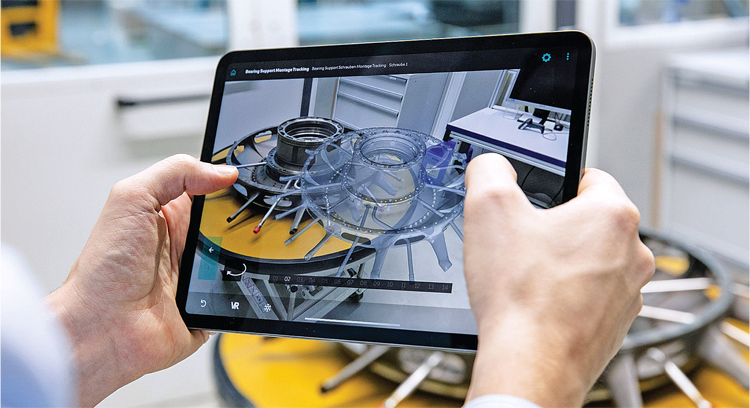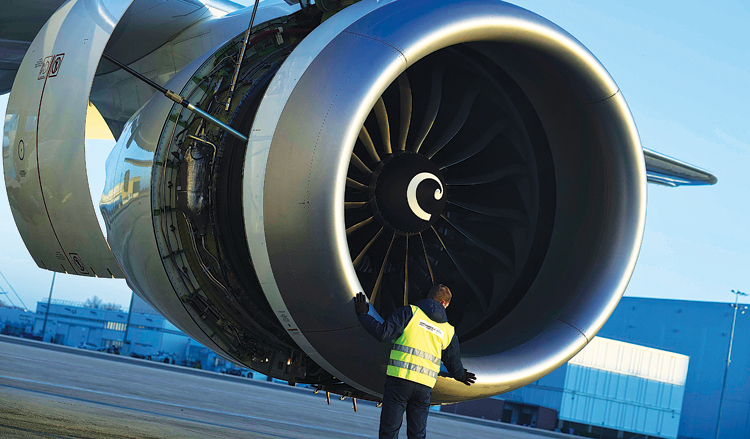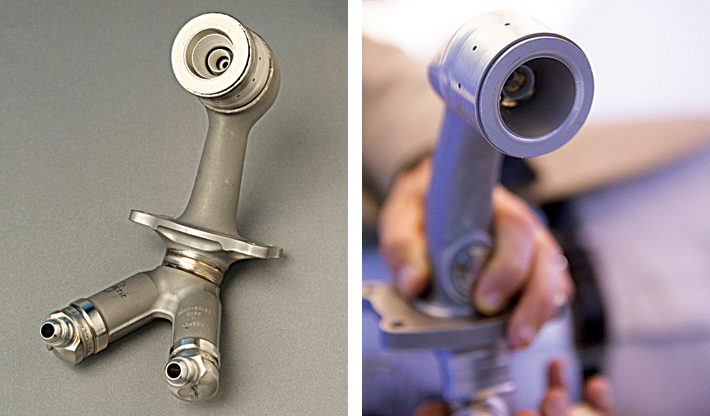Transforming Aviation MRO
Exploring the Latest Trends Shaping the Future of Aviation Maintenance, Repair and Overhaul (MRO)

The aviation MRO (maintenance, repair, and overhaul) industry is a vital part of the global aviation industry. MRO providers offer a wide range of services to keep aircraft in top condition, including preventive maintenance, corrective maintenance, and component overhaul.
The Aviation MRO market is a large and growing industry. In 2022, the global MRO market was valued at $100 billion and is projected to reach $125 billion by 2027. The growth of the MRO market is being driven by a number of factors, including the increasing number of aircraft in service, the growing complexity of aircraft, and the need for airlines to reduce costs. There are a number of other factors that will impact the Aviation MRO market in the coming years. These include:
- The Increasing Demand for Air Travel: The global air travel market is expected to grow at a compound annual growth rate (CAGR) of 4.7 per cent from 2022 to 2032. This growth will lead to an increasing number of aircraft in operation that will lead to an increased demand for MRO services.
- The Aging Aircraft Fleet: The average age of the global aircraft fleet is increasing. This is leading to an increased demand for MRO services as airlines need to maintain their aging aircraft.
- The Need for Airlines to Reduce Costs: Airlines seek costeffective solutions, outsource maintenance activities, optimise their supply chain, invest in advanced technologies, and embrace digitalisation to enhance efficiency and reduce overall MRO expenses. These cost reduction efforts will shape the MRO market dynamics in the coming years.
- The Growing Demand for More Efficient and Reliable Aircraft: This will drive the need for specialised expertise, upgraded capabilities, predictive maintenance strategies, and a focus on safety and compliance. MRO service providers will need to adapt to the changing landscape by investing in advanced technologies, infrastructure, and skilled personnel to meet the evolving requirements of the industry.

The Aviation MRO market is a dynamic and rapidly changing industry. There are a number of trends that are shaping the future of Aviation MRO. The trends mentioned here are just some of the factors that are shaping the future of the industry and airlines that are able to adapt to these trends will be well-positioned to succeed in the years to come. Here is a more detailed look at some of the latest trends in Aviation MRO:
THE RISE OF DIGITALISATION
Digitalisation is transforming the MRO industry. Airlines are increasingly using digital technologies and artificial intelligence to manage their MRO operations. This includes using data analytics to identify potential problems, using predictive maintenance to schedule maintenance tasks, and using augmented reality to guide technicians during repairs. The rise of digitalisation is transforming the Aviation MRO industry in a number of ways.
- Predictive Maintenance: Big data and analytics are being used by MRO providers to improve efficiency and decision-making. Predictive maintenance is a new technology that uses data to predict when an aircraft component is likely to fail. By using data analytics to predict when aircraft components are likely to fail, MRO providers can schedule maintenance more proactively, preventing costly and disruptive unplanned downtime.
- Remote Monitoring: Using sensors and other IoT devices, MRO providers can monitor aircraft components in real time, even when they are in flight. This allows them to identify and address potential problems early, preventing them from developing into major issues.
- Augmented Reality: Augmented reality (AR) and virtual reality (VR) are being used to improve the training of MRO technicians and to guide them through complex maintenance procedures. This can help to improve safety and efficiency.
- Additive Manufacturing: 3D printing is a new technology that is being used to produce aircraft parts more quickly and cost-effectively. This is because 3D printers can create parts from a digital file, which eliminates the need for traditional manufacturing methods, such as casting and machining.
Increasing complexity of the airplanes is driving the shift towards off-wing maintenance, providing higher quality repairs, shorter turnaround times, and cost savings
These are just a few of the ways in which digitalisation is transforming the Aviation MRO industry. As the technology continues to develop, one can expect to see even more innovative and disruptive applications that will further improve the efficiency, safety, and cost-effectiveness of MRO operations. There are some additional benefits of digitalisation in the Aviation MRO industry, like:
- Increased Safety: By using data analytics and other digital tools, MRO providers can identify and address potential safety hazards before they cause an accident.
- Reduced Costs: Digitalisation can help MRO providers to reduce costs in a number of ways, including by improving efficiency, reducing waste, and increasing productivity.
- Improved Customer Service: Digitalisation can help MRO providers to provide better customer service by providing them with more information about their aircraft and by making it easier for them to schedule and track maintenance.
Overall, digitalisation is having a positive impact on the Aviation MRO industry. It is helping to improve safety, reduce costs, and improve customer service. As the technology continues to develop, we can expect to see even more benefits from digitalisation in the years to come.
THE FOCUS ON SUSTAINABILITY
Airlines are increasingly focused on sustainability. This is leading to a demand for MRO services that are more environmentally friendly. This includes using sustainable materials, using energy-efficient equipment, and reducing waste.

There are a number of ways that MRO services can be made more environmentally friendly. One way is to use sustainable materials. For example, some MRO providers are now using recycled materials in their work. Another way to make MRO services more environmentally friendly is to use energy-efficient equipment. For example, some MRO providers are now using LED lighting and energy-efficient air conditioners. Finally, MRO providers can also reduce waste by recycling and reusing materials.
Airlines outsource MRO needs to third-party vendors to reduce their costs, access specialised expertise, improve efficiency, and gain flexibility
There are a number of benefits to using more environmentally friendly MRO services. One benefit is that it can help to reduce the environmental impact of aviation. Aviation is a major source of greenhouse gas emissions, and any steps that can be taken to reduce these emissions are beneficial. Another benefit of using more environmentally friendly MRO services is that it can help to save money. Sustainable materials and energy-efficient equipment can often be more expensive than traditional materials and equipment, but they can save money in the long run by reducing operating costs. By using sustainable materials, energy-efficient equipment, and reducing waste, MRO providers can help to reduce the environmental impact of aviation and save money in the long run. Here are some examples of how airlines are using MRO services to improve their sustainability:
- Lufthansa Technik is using sustainable materials in its aircraft interiors, such as recycled carpets and eco-friendly paints.
- Air France KLM is using energy-efficient equipment in its MRO operations, such as LED lighting and high-efficiency tools.
- Singapore Airlines is reducing waste in its MRO operations by recycling materials and reusing parts.
- Qantas is using sustainable materials in its aircraft interiors, such as recycled carpets and seat covers.
These are just a few examples of how airlines are making their MRO operations more sustainable. As the focus on sustainability continues to grow, we can expect to see even more innovation in this area.
THE GROWTH OF OFF-WING MRO
Off-wing MRO is a growing trend. This is the practice of performing maintenance and repairs on aircraft components that have been removed from the aircraft. Off-wing MRO is more efficient and cost-effective than on-wing MRO.
As aircraft become more complex, it is becoming more difficult and time-consuming to perform MRO on-wing. Off-wing MRO allows for more specialised equipment and personnel to be used, which can lead to higher quality repairs and shorter turnaround times. Also, off-wing MRO can often be more costeffective than on-wing MRO. This is because airlines can avoid the cost of hangar space and ground handling, as well as the cost of downtime for the aircraft. Off-wing MRO can lead to improved safety as well, by allowing for more thorough inspections and repairs. This is because components can be removed from the aircraft and inspected in a controlled environment.

As the aviation industry continues to grow, off-wing MRO is expected to become even more popular. This is because it offers a number of advantages over on-wing MRO, including improved quality, shorter turnaround times, and lower costs. In addition to the factors mentioned above, off-wing MRO can also help airlines to improve their environmental performance. This is because it can reduce the amount of fuel consumed by aircraft during maintenance, as well as the amount of waste generated. As the industry continues to grow, it is likely that off-wing MRO will become even more popular.
THE INCREASING IMPORTANCE OF THIRD-PARTY MRO PROVIDERS
Airlines are increasingly outsourcing their MRO needs to third-party providers. This is due to a number of factors, including the need to reduce costs and the lack of inhouse expertise.
Outsourcing MRO can help airlines save money on labour costs, equipment costs, and inventory costs. Third-party MRO providers often have economies of scale that allow them to offer lower prices than airlines can achieve on their own. Also, outsourcing allows access to specialised expertise. Third-party MRO providers often have access to specialised expertise that airlines may not have in-house. This can be especially important for airlines that operate a wide variety of aircraft or that need to perform complex maintenance procedures. Outsourcing MRO can help airlines improve their efficiency by freeing up resources to focus on other areas of the business. Third-party MRO providers can also help airlines to improve their operational performance by providing them with real-time data and analytics.
Outsourcing MRO can give airlines more flexibility to respond to changes in demand. For example, if an airline experiences a sudden increase in traffic, it can outsource more maintenance work to thirdparty providers to ensure that its aircraft are properly maintained.
Outsourcing MRO can help airlines to improve the safety of their operations by ensuring that their aircraft are properly maintained by qualified technicians. Third-party MRO providers are subject to the same safety regulations as airlines, and they often have more experience in maintaining a wide variety of aircraft.
Overall, outsourcing MRO can offer a number of benefits to airlines, including reduced costs, improved efficiency, increased flexibility, and improved safety.
These are just some of the latest trends in Aviation MRO. These trends are helping to make Aviation MRO more efficient, reliable, and cost-effective. As the industry continues to evolve, even more innovative technologies and processes will used to keep aircraft in top condition. As a result, airlines are able to operate their fleets more safely and efficiently, which ultimately benefits passengers. The Aviation MRO market is a complex and ever-changing industry. However, the trends discussed above provide a glimpse of what the future holds for the industry. Airlines that are able to adapt to these trends will be well-positioned to succeed in the years to come.





